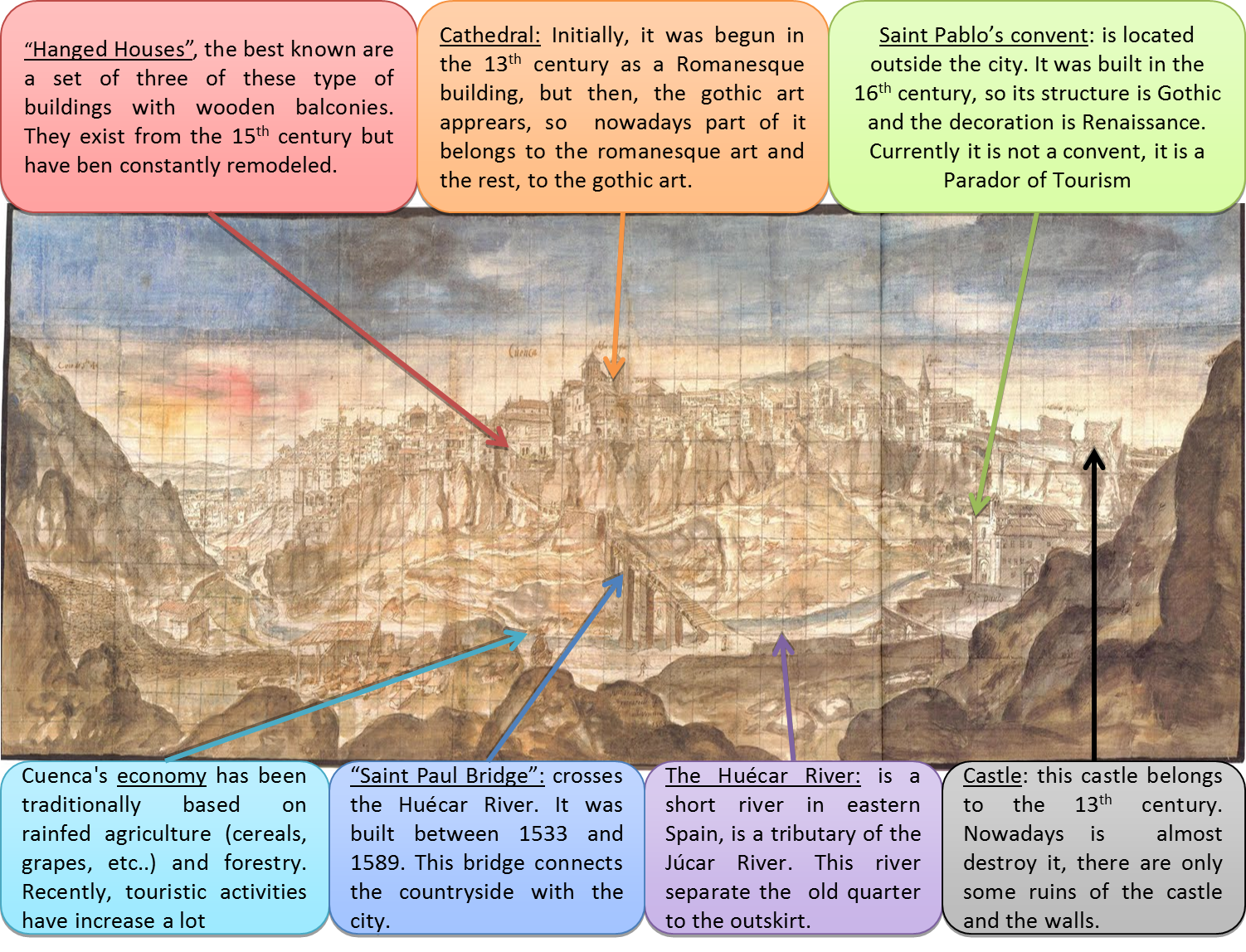CUENCA (Anton Van Den Wyngaerde,1565)
This image was created by Anton Van Den Wyngaerde. He was a Flemish painter of landscapes who lived in the 16th century. This painter toured Spain from 1561, drawing a collection of sixty two views of towns and cities. Thus, the image shows how Cuenca was in the 16th century.
Cuenca is a city in Castilla-La Mancha, situated near Madrid (the capital of Spain). It is ubicated between Albacete and Guadalajara provinces. Cuenca appeared as an urban center located on top of a hill; that is because originally it was a Medieval town and it was surrounded by city walls and the sickle of Huecar’s river as well to protect the city from attack.
This picture displays the old quarter which has an irregular urban layout because it is very conditioned by the topography. The modern city started to grow from the 60s and the modern landscape has a lineal plane. Cuenca grew thanks to the economic activities conducted by workshops, potters and blacksmiths as part of medieval craftsmanship.
In the drawing we can see in detail the following elements. In the foreground we can appreciate a beautiful sunshine that makes you feel a sensation of peace, calmness, tranquility. Nowadays you feel the same when you have a walk along all the narrow streets in the old part of the city. At the top of the image, we can observe the cathedral which is the only Gothic Normand style in Spain. It is situate in the «Main square», in which so many years ago it was celebrate a festival with cows running all around that place and the streets around.
Close to this area we can find the «Hanged Houses» that are very influenced by the topography. In the past this was a common architectural element on the eastern edge of the old city, located opposite the sickle of the river Huécar. They were very useful to protect the city in the medieval times but today only remain a small series of houses. Among all these houses, the best known is a set of three structures with wooden balconies. They exist from the 15th century but have been constantly remodeled and have been used as residences, restaurants and lately the Abstract Art Museum. In this splendid museum not only the superb works of art are astonishing but also the setting and the environment is wonderful.
In the middle of the picture we can distinguish «Saint Paul Bridge» that crosses the river Huécar, linking «Saint Paul‘s convent» and the urban area. The convent situated at the bottom right corner is now a Parador hotel. Although the «Ciudad Encantada» is not showed in the picture, it is an important proximal landscape, very popular because the relief forms and sizes of its rocks.
The city remained on the top of the hill until the 20th century. Then, with the arrival of rural immigration and industrialiation, it began to expand. In the picture, you can only see the old quarter because by that time (16th century) was the only part of the city that was built, but after that Cuenca started a expansion throughout the opposite side of the river. Most of the people are working in the second and third sector in Cuenca ‘city, but in the villages around it ninety percent of the population work in the first sector.
In Cuenca, people usually live around up town, because the houses from down town are very small and old. The buildings are not high at all, mainly because there are not office towers. As I said before, the most important feature of Cuenca housing is the architecture of the «Hanged Houses».
Judith Pintor Ortega

